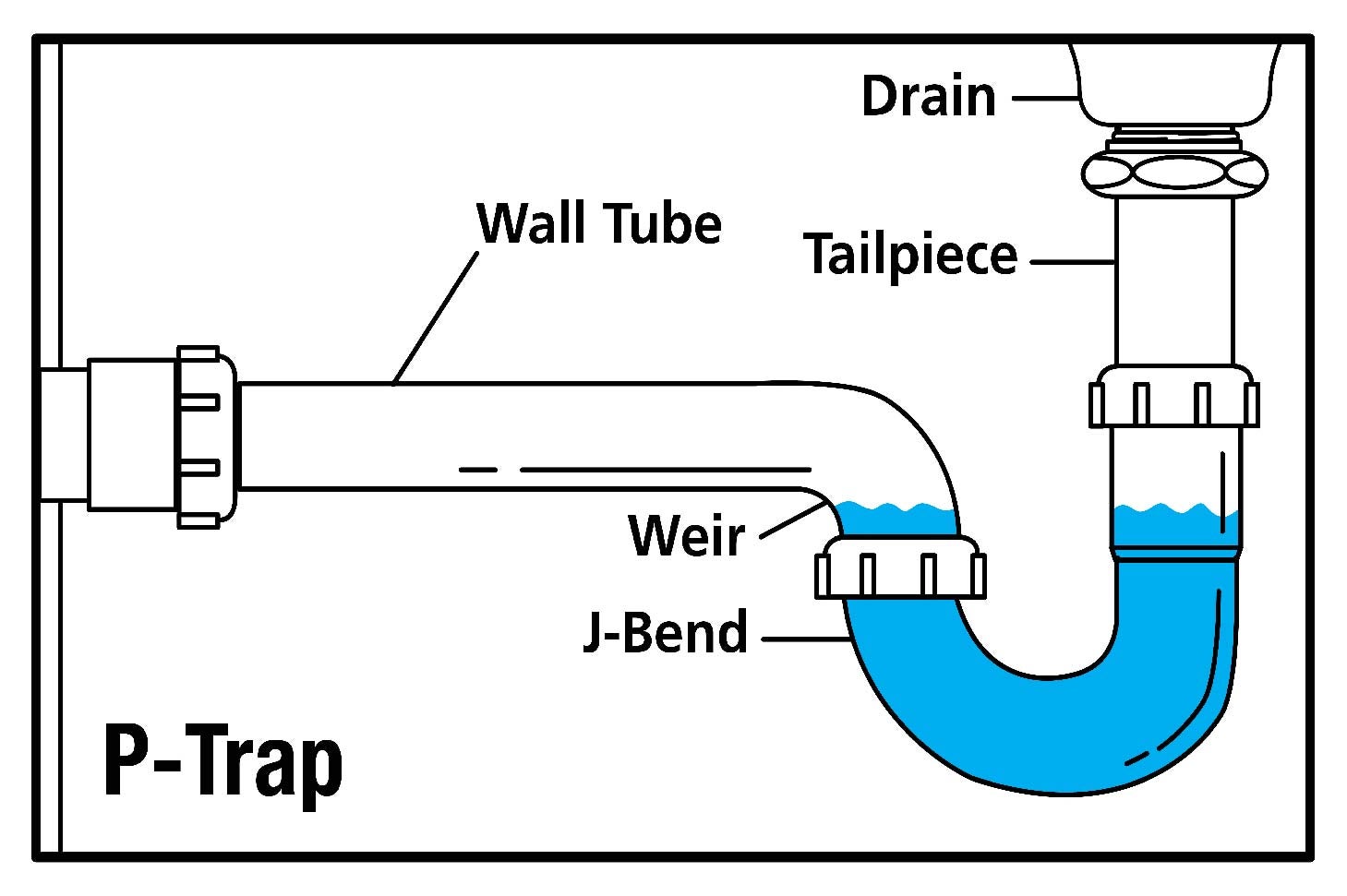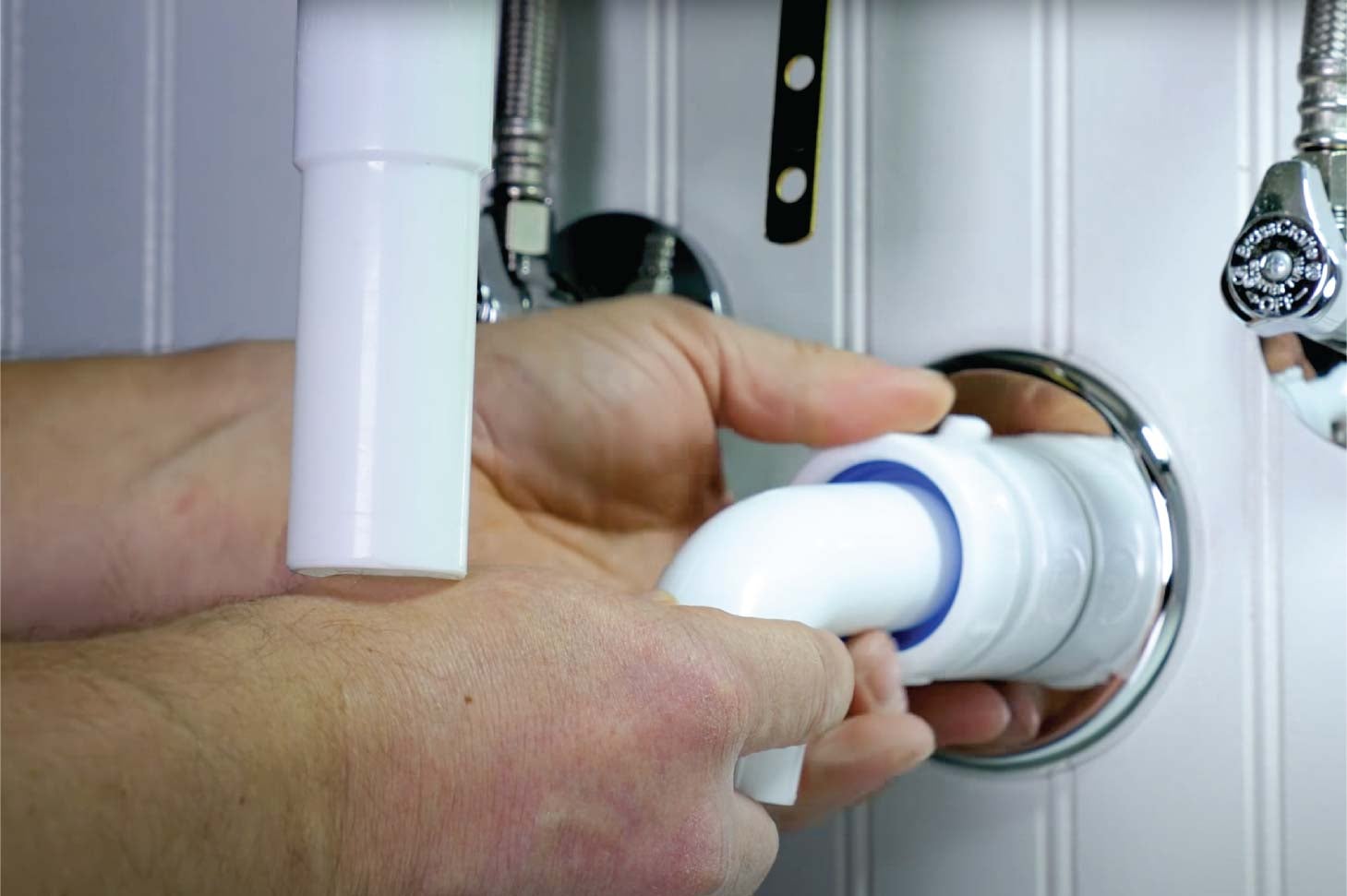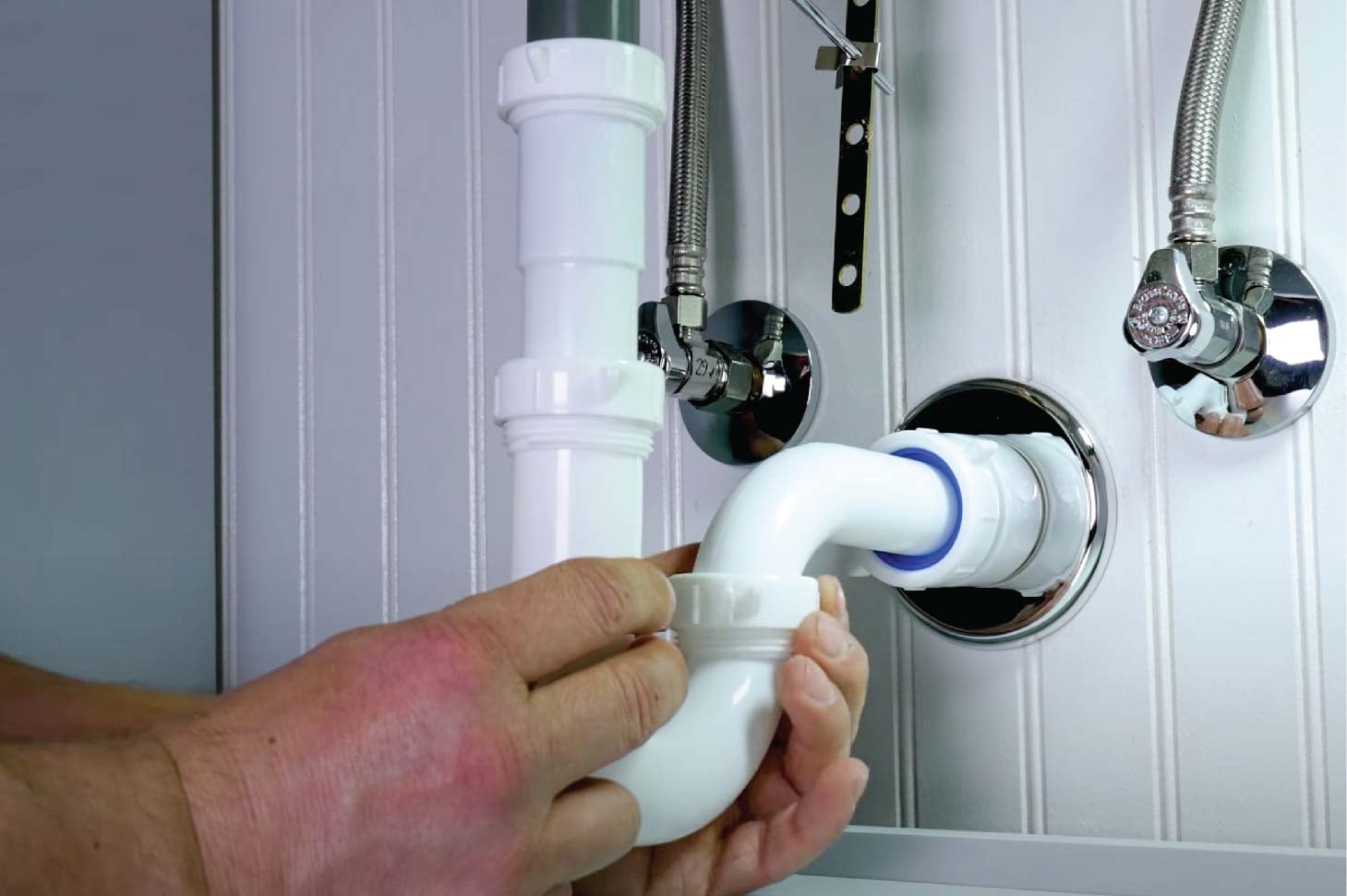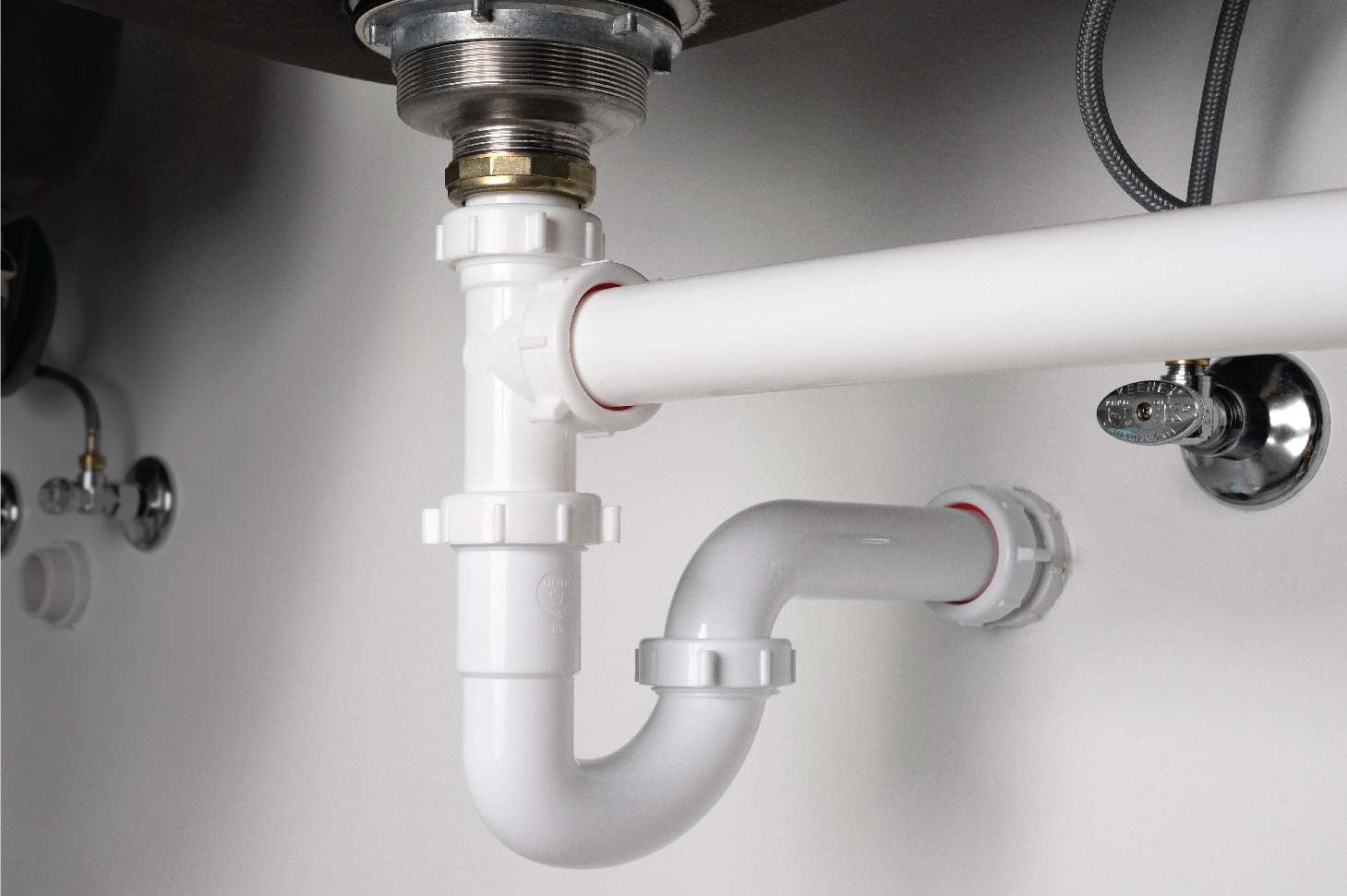When thinking of a plumbing system for your home or dwelling, you first must ensure that waste efficiently and effectively exits the structure into the municipal sewer system or septic tank. Your plumbing system, however, is a two-way street.
A specialized fitting called a p-trap creates a powerful barrier that stops sewer gas and odor from entering your home. The trap is employed in any plumbing system that uses a drain and accepts sanitary waste from tubs, showers and sinks.
How Does a P-Trap Work?
P-traps, named after their shape, contain a u-shaped bend that filters wastewater as it enters a plumbing system. The trap is connected to a sink, bathtub, and shower with a J-bend on one end and exits into your drainage system. The J-bend is the section of the p-trap that resembles the letter J.
The bend in the p-trap collects water in the curve, creating a 1-½-inch to 2-inch water seal at the weir, preventing sewer gasses and odor from entering the home. The weir is the upper bend of the p-trap in which the water would start to spill into the wall tube. With every use of the fixture, new wastewater flushes through the p-trap, replacing the old water in the curve with fresh water.

The p-trap also collects debris and solids from entering your drainage system. Its u-shape captures sediment and prevents it from passing into the sewer.
How to Install a P-Trap
- Sink p-trap: Measure and cut the wall tube to the length needed. Insert the wall tube into the connector, making sure to use a slip joint washer to ensure a seal. Tighten the seal by using the appropriately sized nut that accompanies the kit. A nut and washer are then placed on the tailpiece connected to the fixture drain. Join the j-bend to the tailpiece, securing the seal with another washer and tightening the seal using the included nut.

Its tubular design and simple installation make it easy to snake the drain or disconnect the p-trap for cleaning out debris. The Dearborn® Brass Tubular P-trap with Cleanout takes accessibility for cleaning purposes one step farther with a convenient access point to clear clogs and drains.
For a step-by-step installation video, click HERE.

- Shower p-trap: This type is often located at the center of the shower by the drain. Following the same method, measure and cut the drain line. When installing the fitting to the drain, one of four types of connections can be used: threaded, solvent, or rubber caulking. Once you determine the type of connection to use, install the drain and tighten the nut. Use PVC or ABS fittings for any directional changes needed. Locate the p-trap under the outlet of the shower. Dry-fit the drain pipe, p-trap, and fittings to ensure correct placement. Disassemble these components and solvent weld the p-trap, shower adaptor, and fittings. For more information on solvent welding, view the video HERE.

Different Types of P-Traps
Two types of material are used to make p-traps: brass and polypropylene. Although both serve the same purpose within the plumbing system, each material has advantages and disadvantages.
- Brass: Brass p-traps contain chrome plating, making the appearance of the p-traps aesthetically pleasing to the eye. On the flip side, brass can and will corrode over time with repetitive use.
- Polypropylene: Its plastic counterpart, polypropylene, although not as visually appealing, resists corrosion and reactions with acids. Its lightweight properties offer easy assembly and disassembly, should the need arise.

An essential component to your plumbing system, p-traps do not require routine maintenance. But, like any other pipe system, they may need to be replaced over time.
P-trap kits such as the Oatey White Plastic Sink Drain P-Trap contain all the necessary parts to ensure an easy and efficient installation.